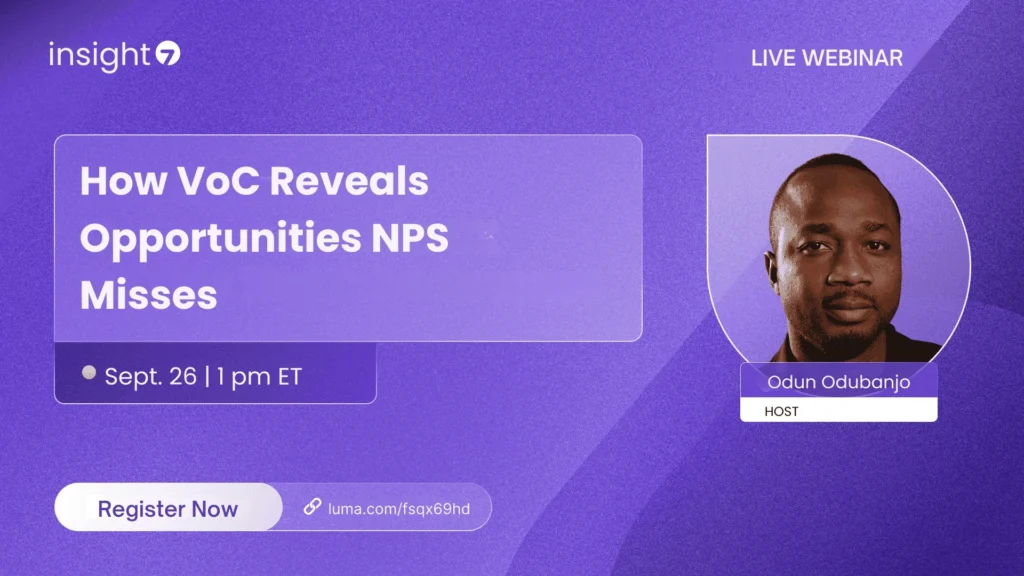How to Develop Agent Personas From QA and Voice-of-Customer Data
-
Bella Williams
- 10 min read
Developing agent personas is a crucial step in enhancing customer engagement and service effectiveness. By leveraging quality assurance and voice-of-customer data, businesses can create detailed representations of their customer-facing agents. These personas not only reflect skills and expertise but also embody the nuances of customer interactions and expectations.
Agent persona development involves a systematic approach to gather and analyze data, ensuring that every persona resonates with real-world insights. Understanding the target audience, their needs, and the context in which agents operate is key to building effective personas. In the subsequent sections, we will explore how to harness QA and customer feedback data to craft compelling agent personas that drive enhanced performance and customer satisfaction.
Analyze & Evaluate Calls. At Scale.

Agent persona development begins by meticulously analyzing the available data from quality assurance (QA) processes and voice-of-customer feedback. This data not only reflects agent performance but also provides insight into customer interactions and expectations. By evaluating how agents handle inquiries, particularly under pressure, organizations can identify patterns of behavior that align with customer needs and preferences.
Next, integrating voice-of-customer feedback is crucial in refining these personas. Understanding how customers perceive agent interactions enables a more nuanced approach to persona development. For instance, exploring customer sentiment during service breaks or misunderstandings can highlight areas for improvement in communication and service delivery. By synthesizing QA data with customer insights, organizations can create well-rounded agent personas that embody the skills and qualities necessary to enhance customer satisfaction and loyalty.
Understanding Agent Persona Development Through Data
Understanding agent persona development through data is a crucial aspect of enhancing customer interactions. By analyzing both QA data and voice-of-customer insights, organizations can create detailed profiles of their support agents. These profiles help depict the personality, strengths, and potential areas for improvement of agents, providing a clearer understanding of the customer experience.
The development process involves identifying patterns in communication styles and customer feedback. First, QA data reveals how effectively agents address inquiries, showcasing their expertise and approach. Next, integrating voice-of-customer data offers a deeper perspective, highlighting customers' feelings and expectations. Together, these data sources empower organizations to refine training programs and establish best practices. Ultimately, effective agent persona development leads to improved customer satisfaction, as it aligns agent capabilities with the evolving needs of the clientele.
The Role of QA Data in Agent Persona Development
Quality assurance (QA) data plays a significant role in developing agent personas by providing insights that can enhance customer interactions. The performance metrics derived from QA evaluations highlight areas of strength and improvement for agents. By analyzing call transcripts and evaluations, organizations can identify common customer issues and the successful tactics agents utilize. This, in turn, allows for the creation of refined personas that reflect real agent performance and customer expectations.
Additionally, leveraging QA data fosters a deeper understanding of the context in which agents operate. This includes understanding compliance levels, customer education efforts, and engagement techniques. By systematically evaluating agents based on these criteria, it becomes easier to mold personas that not only align with organizational goals but also resonate with customer needs. Thus, QA data not only informs agent persona development but serves as a cornerstone for improving overall service quality and customer satisfaction.
Incorporating Voice-of-Customer Data in Agent Persona Development
Incorporating Voice-of-Customer data in agent persona development is a vital step in creating relevant and effective personas. Understanding customer feedback allows businesses to connect their agents’ skills and approach with actual customer needs. By systematically capturing and analyzing this data, organizations can better define who their agents are and how they can provide superior customer service.
To effectively use Voice-of-Customer data, follow these key steps: First, actively collect customer feedback through various channels, such as surveys and direct conversations. Next, categorize this data to identify common themes and pain points experienced by customers. Then, integrate these insights into the agent personas being developed, ensuring that agents are equipped to address real-life scenarios and customer expectations. This tailored approach results in agent personas that are not only well-informed but also more aligned with the needs of the customers they serve.
Extract insights from interviews, calls, surveys and reviews for insights in minutes
Steps to Develop Agent Personas
Developing agent personas begins with a systematic approach to understanding the characteristics and behaviors of agents. The first step is to collect relevant QA data from customer interactions. Analyzing this data reveals trends in agent performance and communication styles, providing valuable insights into effective agent behaviors.
Next, gather Voice-of-Customer feedback to understand customer expectations and perceptions. This feedback illuminates the emotional and practical needs of customers, helping to shape personas that resonate with your target audience. Once both data sources are compiled, analyze them collectively for deeper insights. Look for patterns that indicate common traits among successful agents, such as consultative communication skills and responsiveness.
Finally, build comprehensive agent personas by weaving together the insights from QA data and customer feedback. Ensure these personas represent diverse scenarios and characteristics relevant to your customer base. By following these steps, you will enhance Agent Persona Development and significantly improve customer interactions.
Step 1: Collecting Relevant QA Data
To begin the process of agent persona development, start with collecting relevant QA data. This foundational step involves diving deep into quality assurance records to extract insights. By analyzing recorded calls and customer interactions, you'll uncover patterns in agent performance and customer needs. This data not only aids in identifying common customer issues but also helps gauge how effectively agents resolve these concerns.
Next, focus on segmenting the data based on various criteria such as compliance, problem identification, and customer education. This structured approach allows for a clear understanding of agent strengths and areas for improvement. Additionally, employing evaluation templates will streamline your analysis, ensuring all relevant aspects of customer interactions are covered. By collecting the right QA data, you create a solid foundation that supports meaningful agent persona development, ultimately enhancing customer engagement and satisfaction.
Step 2: Gathering Voice-of-Customer Feedback
Gathering voice-of-customer feedback is a critical step in the process of agent persona development. This feedback provides insights into customer experiences, preferences, and pain points, enabling organizations to understand their audience better. By actively listening to customers, you can glean valuable information that shapes agent behaviors, attitudes, and skills necessary for effective interactions.
To effectively gather this feedback, consider implementing the following strategies:
- Surveys and Questionnaires: Utilize structured surveys post-interaction to capture customer sentiments.
- Focus Groups: Engage target customers in discussions to explore their thoughts in a more dynamic environment.
- Customer Interviews: Conduct one-on-one interviews for deep qualitative insights.
- Social Media Monitoring: Keep track of mentions and sentiments expressed on social platforms to gauge public perception.
- Feedback from Customer Support Interactions: Analyze transcripts from customer service interactions for immediate insights.
Incorporating these methods ensures a well-rounded understanding of your customer base, leading to more accurate and relevant agent persona development.
Step 3: Analyzing Data for Persona Insights
To gain meaningful insights for agent persona development, it's crucial to analyze the data gathered from QA and voice-of-customer interactions. Start by organizing the data into projects segmented by timeframes or specific themes. This method allows you to track the evolution of customer sentiments and highlight recurring patterns. Analyzing this data will reveal key pain points and common challenges faced by customers, such as service expectations and areas for improvement.
Next, identify themes that emerge from the data, categorizing insights into manageable sections for deeper understanding. For instance, use a matrix to pinpoint the frequency of issues raised across multiple interactions, which can significantly improve the credibility of your personas. Creating a visual representation of this analysis enhances comprehension and ensures that all stakeholders can access and utilize these insights effectively in the agent persona development process. By continually refining this analysis, you strengthen the alignment between customer expectations and agent effectiveness, ultimately enhancing overall customer experience.
Step 4: Building Comprehensive Agent Personas
Building comprehensive agent personas is a crucial step in the agent persona development process. Once you have gathered and analyzed your quality assurance and voice-of-customer data, it's time to synthesize this information into well-rounded profiles. These personas should reflect the various attributes, skills, and communication styles of your agents, ensuring they resonate with customer needs and expectations.
To create effective agent personas, consider the following key elements. First, delineate the primary roles agents occupy and the contexts in which they interact with customers. Second, identify the unique strengths and challenges each persona may face based on your data analysis. Finally, enrich these profiles by incorporating feedback and insights from actual interactions, which can further highlight real-world applications and nuances. By investing time into building these comprehensive agent personas, you empower your team to enhance customer engagement and drive higher satisfaction levels.
Tools for Agent Persona Development
Selecting the right tools is essential for effective agent persona development. Various platforms can support this goal by analyzing quality assurance and voice-of-customer data. Each tool offers unique features that help in tailoring personas that accurately reflect customer needs and behaviors.
One effective tool is insight7, which provides advanced analytics capabilities, allowing users to derive actionable insights from customer interactions. Another powerful option is UserTesting, which enables real-time user feedback to refine persona attributes. Butlers and Qualaroo also help gather direct customer input, ensuring that the personas remain relevant and grounded in actual experiences. Lastly, Zendesk offers robust ticketing and customer support features, facilitating deeper understanding of customer challenges and preferences. By employing these tools, businesses can significantly enhance their agent persona development process, leading to improved engagement and customer satisfaction.
insight7
In developing agent personas, one must consider the critical integration of QA and voice-of-customer data. This data serves as a foundation for crafting clear and effective agent personas. By analyzing conversations and interactions, organizations can gain invaluable insights into customer behavior and preferences, which are instrumental in shaping these personas.
The development process involves several key steps. First, collecting relevant QA data helps to identify patterns in agent performance and customer inquiries. Next, gathering voice-of-customer feedback reveals deeper insights into customer sentiments, preferences, and expectations. Analyzing this data collectively enables teams to build comprehensive agent personas that resonate with real customer experiences. Ultimately, focusing on these steps not only enhances the understanding of customer needs but also drives more engaging and satisfying interactions in the future.
Butlers
In the context of agent persona development, the term "Butlers" signifies the multi-faceted role agents play in enhancing customer interactions. Just as a traditional butler anticipates needs and provides tailored service, agents equipped with insights from QA data and voice-of-customer feedback can address customer queries proactively. This approach transforms agents from reactive responders into strategic partners, driving customer satisfaction and loyalty.
Understanding agent personas as contemporary butlers enables organizations to refine their customer engagement strategies. By utilizing qualitative data and real customer insights, you can sculpt detailed personas that embody unique traits, preferences, and behaviors. This enables agents to deliver personalized experiences that resonate with customers on a deeper level. As organizations develop these personas, the ability to adapt and respond to customer needs with precision becomes a key differentiator in today's fast-paced service landscape.
UserTesting
UserTesting is a vital element in the process of Agent Persona Development. Through observing users interacting with your service, you can extract valuable insights that shape the personas representing your agents. This process enables businesses to tailor training and resources effectively, aligning them with the specific needs and preferences identified through user interactions.
To ensure comprehensive understanding, there are a few key practices to follow in UserTesting:
Create Realistic Scenarios: Develop scenarios that reflect actual customer interactions to gather genuine feedback on agent performance.
Collect Qualitative and Quantitative Data: Utilize both methods in your testing to gain a well-rounded perspective on user satisfaction and agent effectiveness.
Review and Refine Your Findings: It’s critical to analyze the data collected and refine the agent personas based on real ongoing insights from users.
Employing these practices allows businesses to continuously improve their services by ensuring that agent personas accurately reflect customer needs and expectations.
Qualaroo
Qualaroo offers a unique platform for enriching agent persona development. By systematically gathering feedback directly from users, it provides insights that can define agent characteristics and customer interactions. This data is pivotal for shaping a deeper understanding of customer needs and preferences, ultimately informing the creation of effective agent personas.
When employing Qualaroo, consider these critical steps: First, utilize its survey tools to capture direct feedback from customers. This method allows for real-time insights into their experiences. Second, analyze the qualitative data received, identifying common themes that emerge from user responses. Lastly, integrate these insights into your persona profiles, ensuring they reflect actual customer sentiments and expectations. By transforming user feedback into actionable data, Qualaroo plays a fundamental role in refining agent personas and enhancing overall customer engagement strategies.
Zendesk
Zendesk serves as a powerful tool for Agent Persona Development by streamlining the collection and analysis of support interactions. It effectively captures customer queries and responses, providing valuable insights into the needs and preferences of various customer segments. By analyzing the data gathered from agents' interactions, organizations can identify key behavioral patterns, which are crucial for building well-rounded agent personas.
To maximize the potential of this platform, it's essential to focus on specific functionalities. First, utilize the reporting feature to track performance metrics and customer satisfaction scores. Second, engage in effective tagging to categorize interactions based on common issues and resolutions. Lastly, leverage integrations with Voice-of-Customer tools to enrich your data set, enabling a more nuanced understanding of customer expectations. By combining these strategies, businesses can develop detailed agent personas, leading to enhanced service quality and customer engagement.
Conclusion: The Impact of Agent Persona Development on Customer Experience
The journey of developing agent personas significantly influences customer experience. By understanding the unique characteristics and preferences of agents, businesses can create tailored interactions that resonate with customers. When agents embody well-researched personas, they foster authentic connections, leading to improved satisfaction and loyalty. This personal touch transforms the customer service landscape, making each interaction feel more meaningful and engaging.
Moreover, effective agent persona development contributes to a proactive approach in addressing customer needs. By utilizing insights from both QA and voice-of-customer data, organizations can refine their training and support processes. This ensures that agents are equipped with the necessary skills to respond effectively and empathetically. Ultimately, embracing agent persona development not only enhances customer interactions but can also drive overall business success.
Analyze & Evaluate Calls. At Scale.








